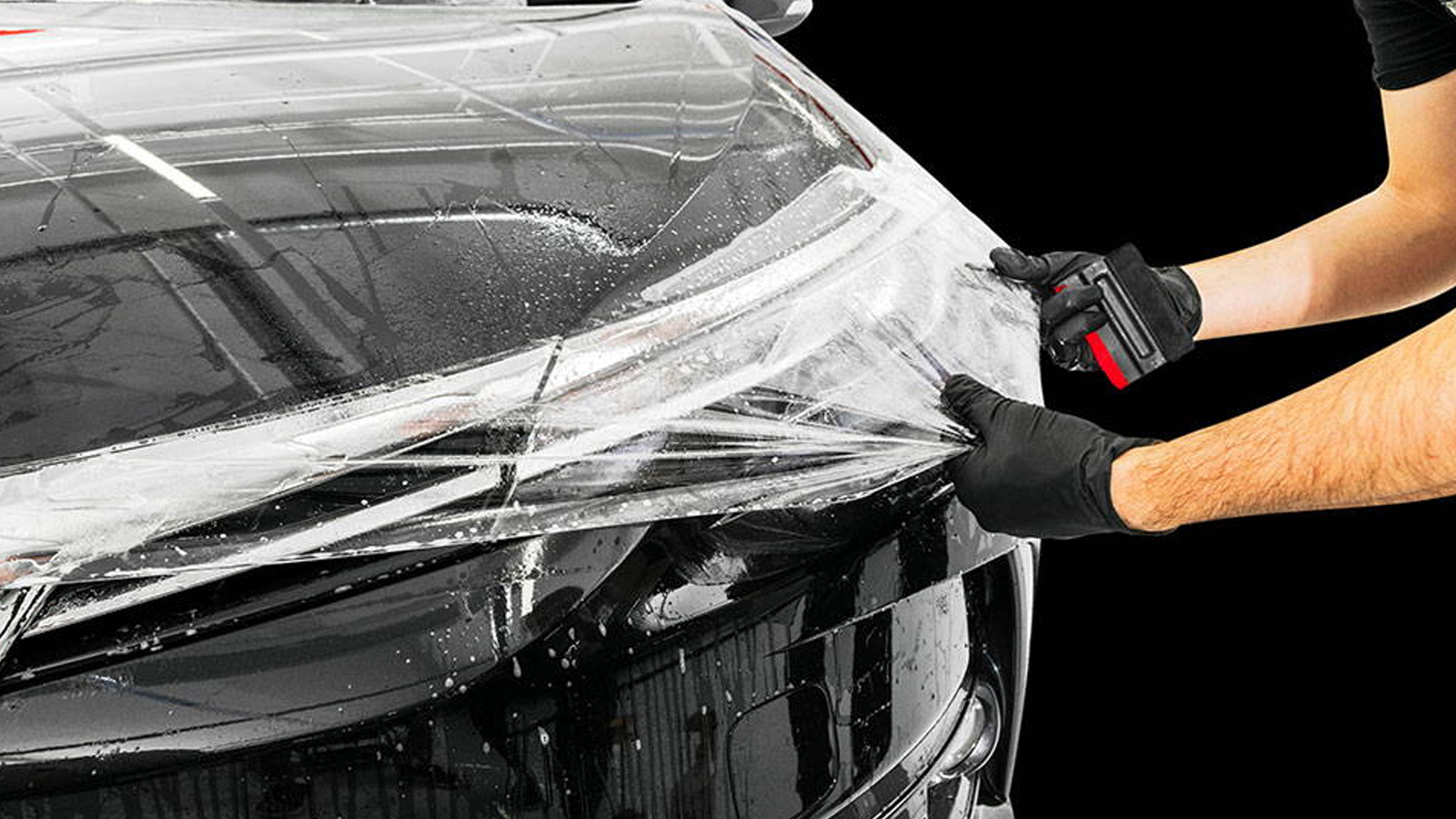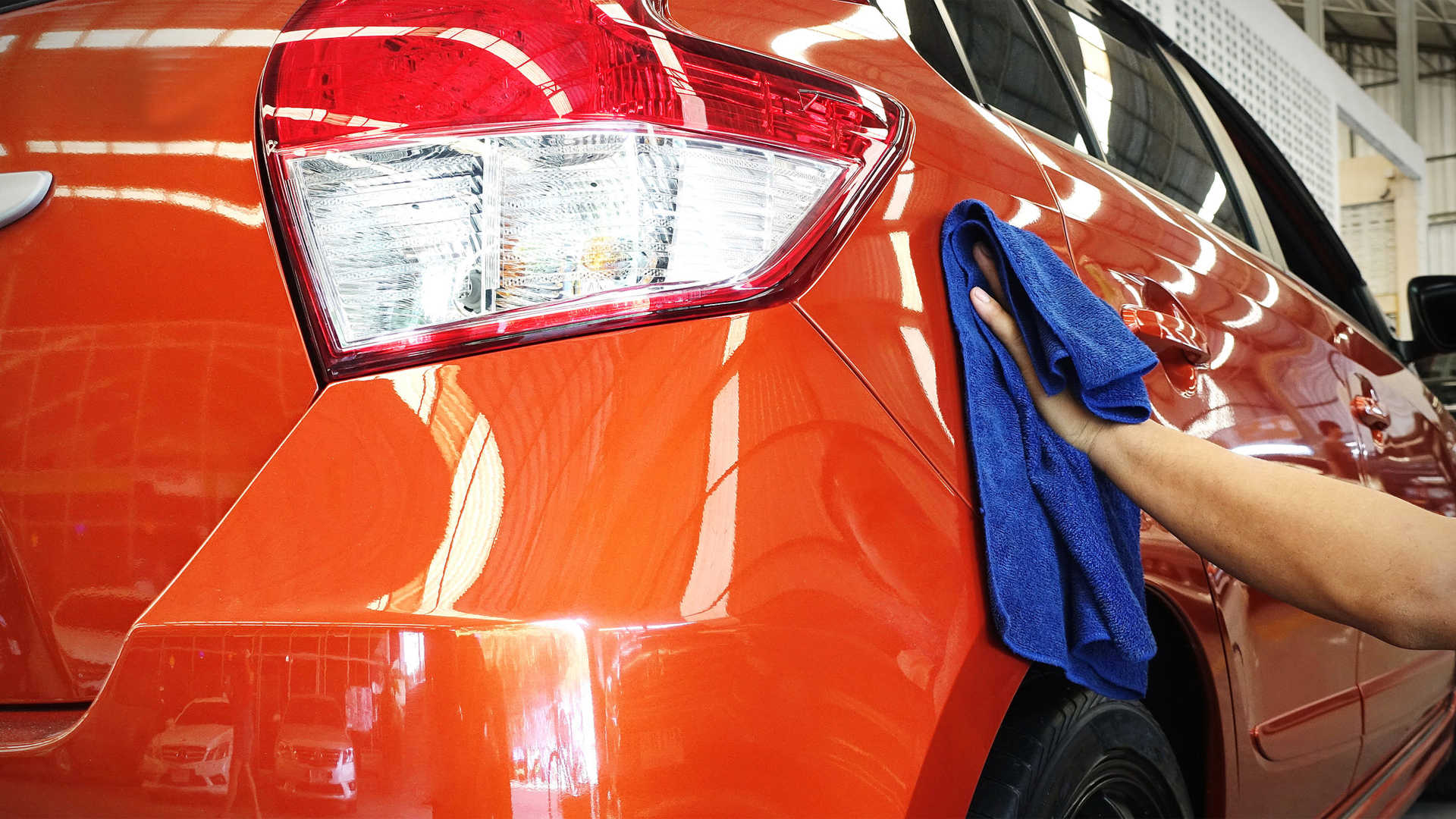Boost your vehicle’s longevity with our top-notch PPF Maintenance services. Discover professional care tips and maintenance tricks now! Paint Protection Film (PPF) is a transparent, self-healing urethane film applied to a vehicle’s exterior to safeguard the paint from various environmental hazards. It serves as an invisible shield, protecting against rock chips, scratches, road debris, insect stains, and harmful UV rays. PPF is a crucial investment for car owners who want to maintain their vehicle’s pristine appearance and retain its resale value.
Proper maintenance of PPF is paramount to ensure its long-lasting effectiveness. While PPF is designed to be durable, neglecting its care can lead to reduced protection and unsightly blemishes. Regular maintenance not only keeps the film in optimal condition but also enhances its ability to resist damages. By following a diligent cleaning routine and avoiding harsh chemicals or abrasive tools, car owners can prolong the life of their PPF.
Furthermore, addressing any minor damages promptly can prevent them from spreading and compromising the overall effectiveness of the film. With the right care and attention, PPF can continue to shield the vehicle’s paint, allowing car enthusiasts to revel in the beauty of their well-preserved exterior for years to come.
Understanding PPF Properties

Paint Protection Film (PPF) is a transparent, thermoplastic urethane film designed to safeguard a vehicle’s exterior from various elements that can cause damage over time. The film is engineered to be self-healing, enabling it to recover from light scratches and swirl marks through exposure to heat or sunlight. PPF is optically clear, maintaining the original appearance of the vehicle while providing an added layer of protection.
The film’s composition includes multiple layers, each serving a specific purpose. The topmost layer is responsible for the self-healing property, while the middle layer absorbs impacts, like rock chips and minor abrasions. The bottom adhesive layer ensures a strong and secure bond to the vehicle’s surface.
One of the primary benefits of PPF is its ability to shield the car’s paintwork from various environmental hazards, such as road debris, stone chips, insect stains, and bird droppings. Additionally, PPF protects against UV rays, preventing paint fading and discoloration caused by prolonged sun exposure. By preserving the original paint, PPF also helps maintain the vehicle’s resale value. With its durable and protective properties, PPF is an excellent investment for car owners looking to keep their vehicles looking newer for longer.
PPF Installation Tips
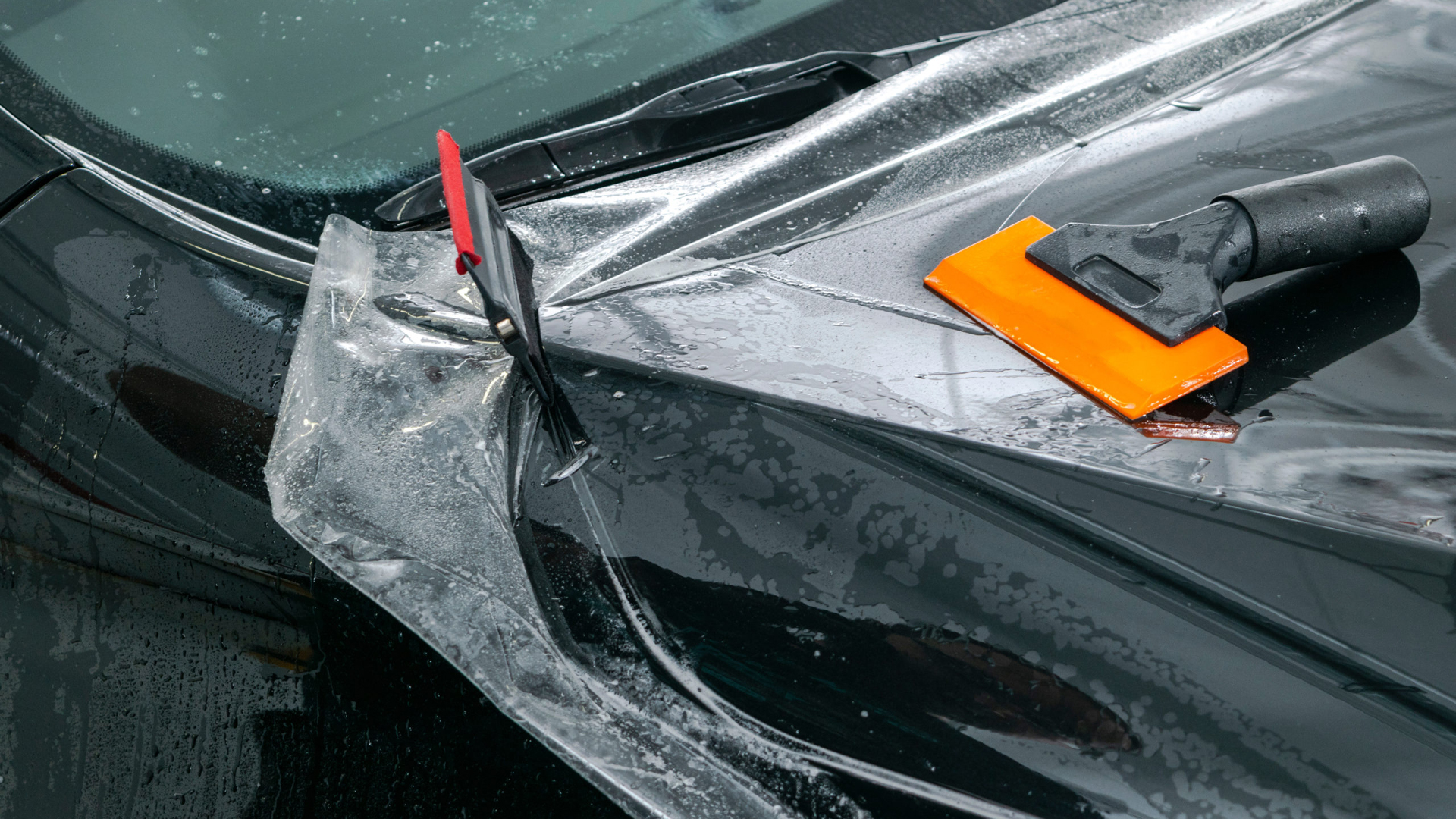
Professional installation is paramount for achieving optimal results when applying Paint Protection Film (PPF) to your vehicle. While some may consider a DIY approach to save costs, entrusting the installation to a skilled and experienced professional ensures the film adheres flawlessly to every curve and contour of the car’s surface. Professional installers possess the necessary expertise and use specialized tools to ensure a smooth, bubble-free application, maximizing the film’s protective capabilities and enhancing the overall appearance.
The PPF installation process involves several critical steps that require precision and attention to detail. Firstly, the vehicle’s exterior must be thoroughly cleaned and free from any contaminants, such as dirt, wax, or residue. Next, the installer carefully measures and pre-cuts the PPF sheets to fit each panel precisely, which demands expert skill to avoid excess film and unsightly seams. During application, the installer uses a lubricated solution to facilitate proper alignment and prevent premature adhesion.
Potential challenges during PPF installation include handling large and complex vehicle surfaces, like bumpers or curved hoods, which demand finesse and expertise to avoid wrinkles or misalignment. Moreover, installing PPF around tight corners and edges requires patience and dexterity to ensure a seamless finish. Experienced professionals can navigate these challenges adeptly, delivering a superior result that not only safeguards the vehicle’s paint but also enhances its visual appeal.
By choosing professional installation, car owners can rest assured that their investment in PPF is well-protected, offering long-lasting defense against road debris, scratches, and other external hazards while maintaining the vehicle’s pristine appearance.
Cleaning Dos and Don’ts
A. Recommended Cleaning Products and Techniques for PPF:
Use a gentle automotive-specific soap: Opt for a pH-balanced soap specifically designed for automotive surfaces. Avoid household cleaners as they may contain chemicals that can harm the PPF.
Microfiber towels: Use soft, clean microfiber towels for washing and drying. Microfiber is non-abrasive and won’t scratch the film’s surface.
Quality wash mitts or sponges: Employ soft wash mitts or sponges to gently remove dirt and debris without causing damage.
Diluted isopropyl alcohol: When necessary, a mild solution of isopropyl alcohol and water can be used to remove stubborn contaminants. Ensure the alcohol is diluted to avoid potential damage.
PPF-specific detail sprays: Use PPF-friendly detail sprays to enhance the film’s shine and provide extra protection.
B. Warnings against Using Abrasive Materials or Harsh Chemicals:
Avoid scrub brushes or pads: Abrasive cleaning tools can scratch or mar the PPF’s surface, compromising its protective properties.
Steer clear of aggressive chemicals: Harsh chemicals like acetone, ammonia, or bleach can damage the film’s clear coat and weaken its protection against environmental factors.
Say no to automatic car washes: Automated car washes often use brushes and harsh chemicals that can harm the PPF. Handwashing is the safer option.
Be cautious with pressure washers: If using a pressure washer, maintain a safe distance and use a wide spray pattern to minimize the risk of damaging the film.
Remember, the key to preserving the pristine condition of your PPF is to adopt a gentle and regular cleaning routine. Avoid shortcuts and adhere to these cleaning dos and don’ts to ensure your paint protection film stays effective in safeguarding your vehicle’s exterior for the long term.
Regular Maintenance Routine
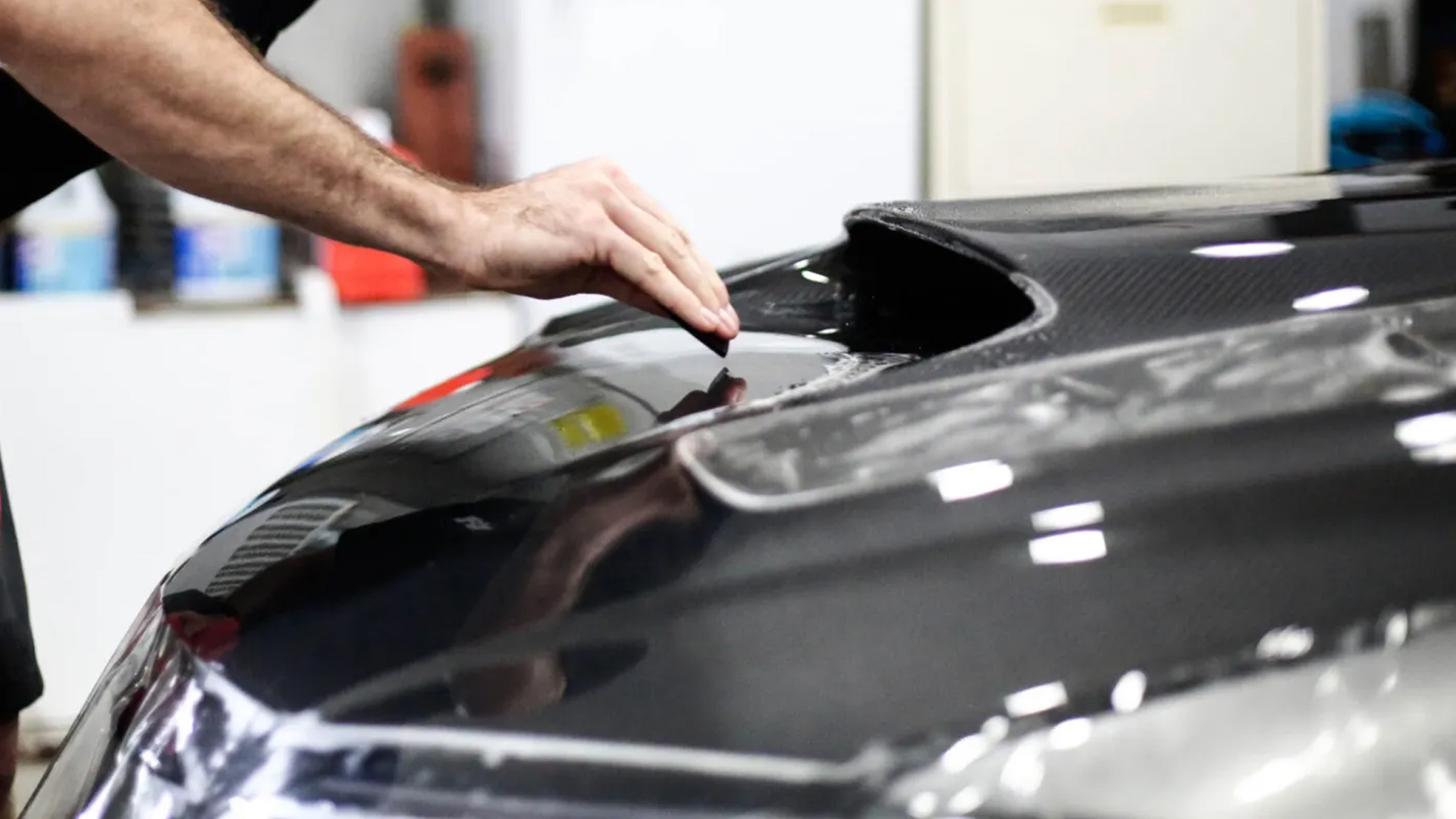
Establishing a regular maintenance schedule is crucial to keep your Paint Protection Film (PPF) in pristine condition and ensure long-lasting protection for your vehicle’s exterior. We recommend setting a bi-weekly cleaning routine for optimal results, but the frequency may vary based on your driving habits and local environmental conditions. Consistency is key to preventing dirt, debris, and contaminants from building up on the film’s surface.
Step-by-step instructions for cleaning and maintaining PPF:
Rinse: Start by rinsing your car thoroughly with water to remove loose dirt and debris. A gentle stream of water from a hose will suffice.
Washing: Use a pH-balanced automotive soap and a soft microfiber wash mitt to hand wash the PPF. Avoid aggressive scrubbing or using brushes that may scratch the film.
Rinse Again: Rinse the car again to ensure all soap residue is removed completely.
Drying: Gently dry the vehicle using a clean, soft microfiber towel. Pat the surface rather than dragging the towel to prevent potential damage.
Detailing Spray: Apply a PPF-specific detailing spray to enhance the film’s shine and further protect it from environmental elements.
Avoid Harsh Chemicals: Do not use abrasive cleaners, harsh chemicals, or automatic car washes with brushes, as they can degrade the PPF over time.
Inspect Regularly: Regularly inspect the PPF for any signs of damage, such as scratches or edge lifting. Address minor issues promptly to prevent further complications.
By following this regular maintenance routine, you can ensure your PPF remains in top-notch condition, providing your vehicle with long-term protection against rock chips, scratches, and other potential hazards.
Addressing Common Issues
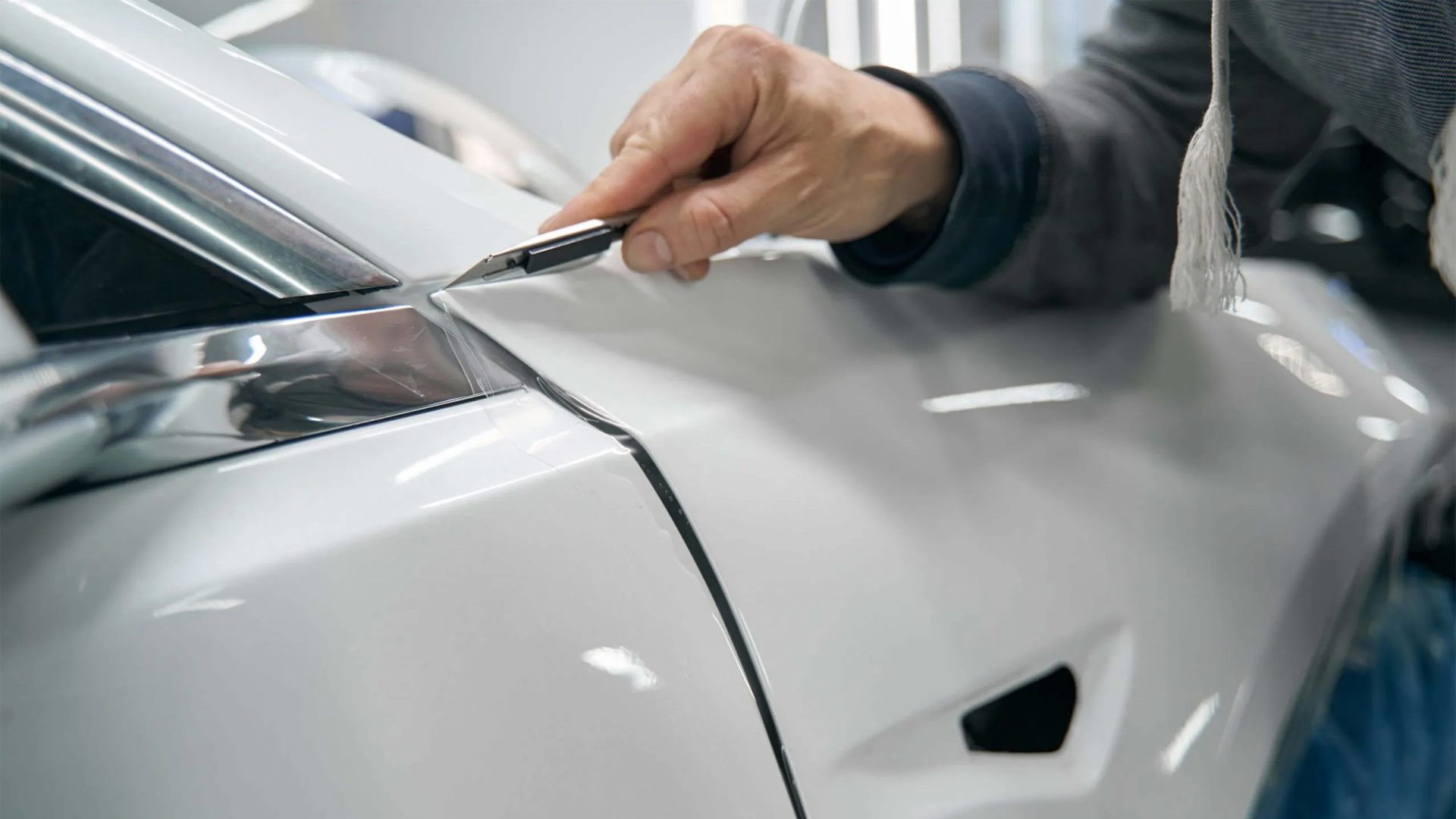
Paint Protection Film (PPF) provides excellent protection against various elements, but it’s not immune to common issues such as water spots, bird droppings, and tree sap. Water spots, left unattended, can become stubborn stains, while bird droppings and tree sap can adhere to the PPF, affecting its appearance and efficacy.
To tackle these issues without harming the PPF, follow these effective solutions:
Water Spots: Quickly remove water spots using a mixture of distilled water and isopropyl alcohol. Gently wipe the affected area with a soft microfiber cloth. Avoid using harsh chemicals or scrubbing vigorously to prevent damage.
Bird Droppings: Act promptly to remove bird droppings with a damp microfiber cloth and a mild automotive soap. Wet the affected area, let it soak for a minute, then gently wipe off the droppings.
Tree Sap: Dab the tree sap with a soft cloth soaked in rubbing alcohol or a specialized adhesive remover. Allow it to sit for a few minutes, then gently rub the sap away. Rinse the area and dry carefully.
Always use gentle, non-abrasive materials and mild cleaning solutions designed for automotive use. Regularly washing and maintaining your PPF will ensure it continues to protect your car’s paint and maintains its pristine appearance over time. Remember, swift action is key to preventing these common issues from causing permanent damage to your PPF.
Repairing PPF Damages

When it comes to minor damages on your Paint Protection Film (PPF), prompt and careful attention is essential to maintain its integrity. For minor scratches, start by cleaning the affected area with a mild soap and water solution. Gently rub the scratch with a microfiber cloth, avoiding excessive pressure. If the scratch is shallow, it may be possible to reduce its appearance significantly.
For edge lifting, use a heat gun or a hairdryer on low heat to warm the affected area. As the adhesive softens, carefully press down the lifted edge with a clean cloth or a rubber squeegee. Ensure the PPF adheres properly to the surface without any visible bubbles or gaps.
However, for extensive damages or if you are uncertain about handling the repairs, it’s best to seek professional help. Certified PPF installers possess the expertise and specialized tools to address complex issues without compromising the film’s overall integrity. They can efficiently repair or replace damaged sections, ensuring a seamless appearance and maintaining the PPF’s protective properties.
Remember, attempting major repairs without proper knowledge or tools could lead to further damage and compromise the effectiveness of the film. Always err on the side of caution and involve professionals for more challenging PPF repairs, ensuring your vehicle continues to enjoy the maximum benefits of this crucial protective layer.
Protecting PPF from Environmental Factors
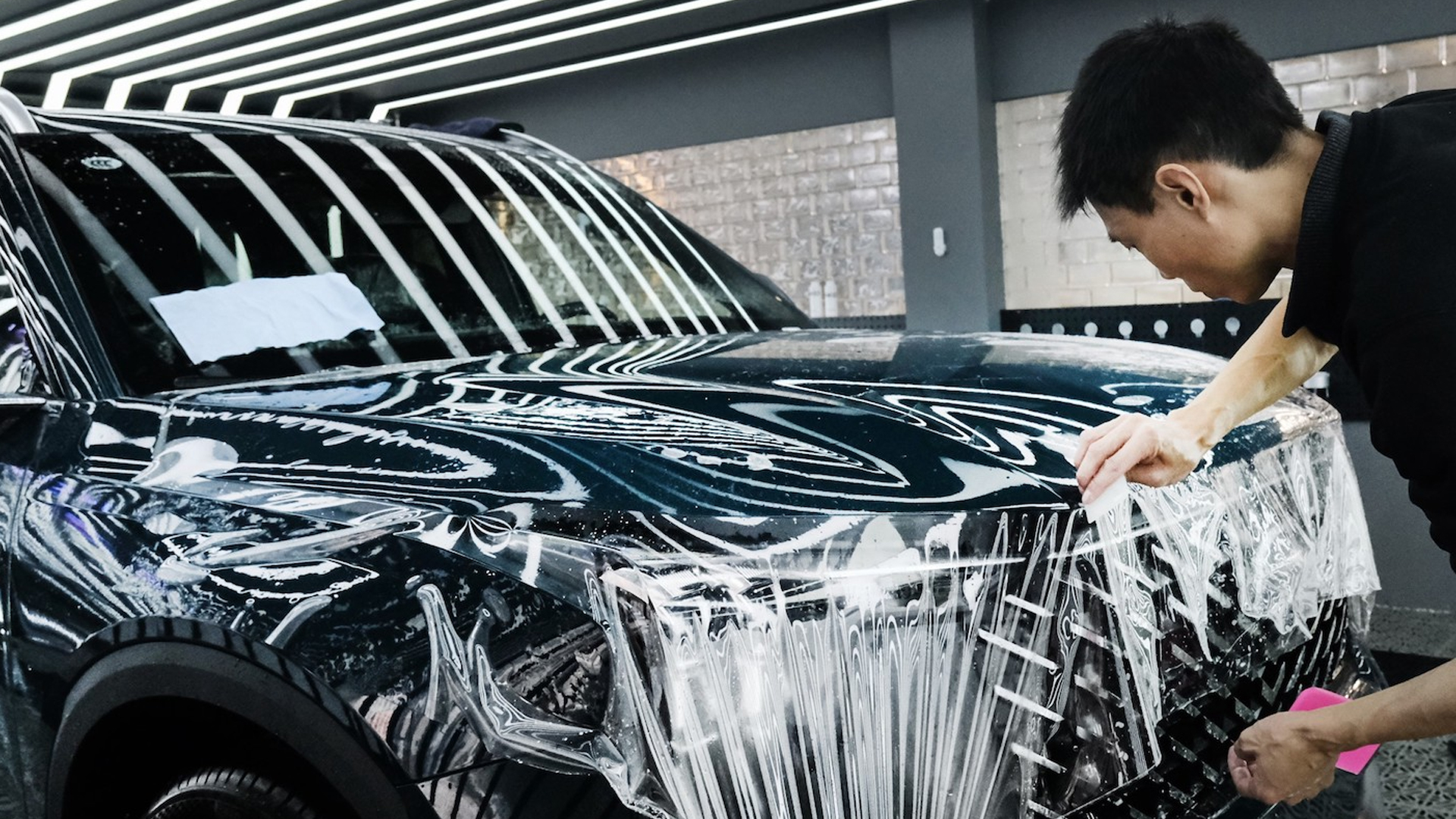
To safeguard your Paint Protection Film (PPF) from environmental damage, consider adopting smart parking strategies. Whenever possible, park your vehicle in shaded areas, such as under trees or in covered parking lots, to reduce prolonged exposure to sunlight. Excessive sun exposure can lead to fading and premature aging of the PPF, affecting its protective capabilities. Moreover, avoid parking near industrial sites or construction zones where airborne debris and pollutants are prevalent.
Complement the protective properties of PPF by applying a ceramic coating. Ceramic coatings form a strong, transparent layer over the PPF, providing an extra shield against contaminants, UV rays, and environmental aggressors. The hydrophobic nature of ceramic coatings also facilitates easier cleaning, reducing the risk of potential scratches during maintenance. However, it’s essential to ensure the PPF is thoroughly cleaned and free from any defects before applying the ceramic coating for the best adhesion and results.
By combining smart parking choices with the enhanced protection of ceramic coatings, you can significantly extend the lifespan and effectiveness of your PPF. Remember that proactive measures and regular maintenance are key to keeping your PPF looking pristine and ensuring your vehicle’s paint remains in top condition beneath the film.
Long-Term PPF Care
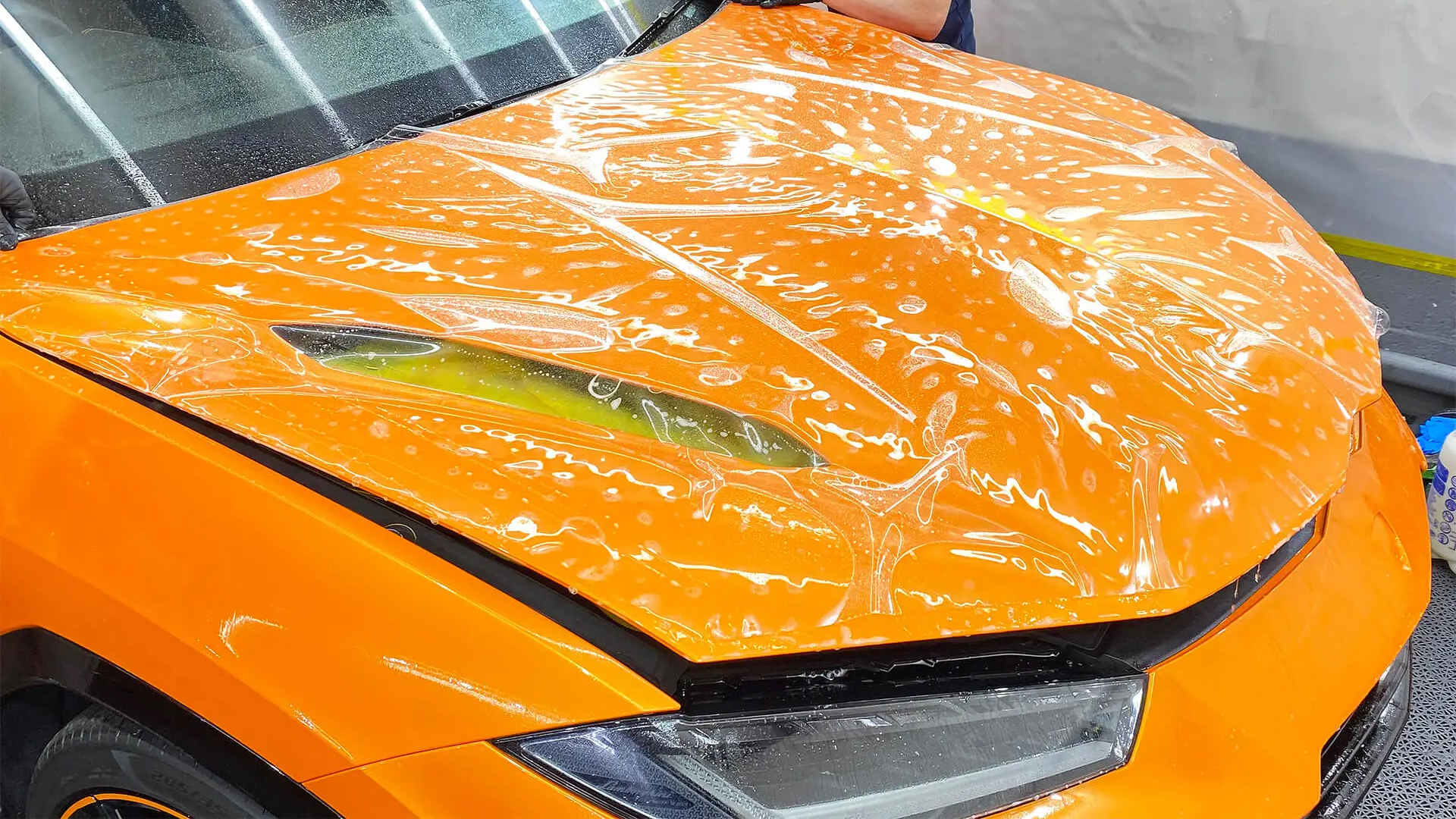
Maintaining your Paint Protection Film (PPF) over the long term is essential to ensure it continues to provide optimal protection for your vehicle’s paintwork. Consistent and proper care will prolong the life of the film, safeguarding your car’s appearance and resale value. Neglecting maintenance can lead to diminished effectiveness and potentially compromise the film’s protective capabilities. By following a regular maintenance routine, you can enjoy a pristine and well-protected vehicle for years to come.
Tips for assessing the film’s condition and knowing when it might need replacement:
- Visual Inspection: Regularly inspect the PPF for any signs of damage, such as scratches, chips, or discoloration. Small imperfections can be addressed with spot repairs, but widespread issues may indicate the need for replacement.
- Check Edges: Pay attention to the edges of the PPF. If you notice lifting or peeling, moisture and debris can infiltrate beneath the film, necessitating professional attention.
- Water Beading: After washing your car, observe how water behaves on the PPF. If it no longer beads up and rolls off, it might be time for a refresh or replacement.
- Loss of Clarity: Over time, PPF may lose its clarity due to accumulated contaminants or UV exposure. If you notice reduced transparency, it’s advisable to consider a replacement.
- Deep Scratches or Cracks: Deep scratches or cracks that extend through the film’s layers may compromise its protective capabilities. In such cases, consult a professional for assessment and potential replacement.
- Age of the Film: While high-quality PPF is designed to be durable, it still has a lifespan. If your film has been on the car for several years, it might be worth considering a new installation to ensure continued protection.
Conclusion
In conclusion, maintaining the pristine appearance of your Paint Protection Film (PPF) requires diligent care and attention. Understanding the properties and benefits of PPF is the first step, ensuring it safeguards your vehicle against various external threats. Professional installation is crucial for optimal results, followed by using the right cleaning products and techniques to avoid damage.
Establishing a regular maintenance routine is essential, addressing common issues promptly and seeking professional assistance when needed. Protecting PPF from environmental factors, such as UV rays and extreme weather, adds to its longevity and effectiveness. Long-term care involves consistent efforts and periodic assessment to ensure the film’s condition remains top-notch.
We encourage you to apply these expert practices diligently, as they will undoubtedly extend the life and effectiveness of your PPF. By mastering the art of PPF maintenance, you can keep your vehicle looking brand new and enjoy the benefits of long-lasting protection.
FAQ's
PPF stands for Paint Protection Film, a transparent layer that shields your car’s paint from chips, scratches, and UV damage, preserving its appearance.
Professional installation is recommended to ensure proper alignment and to avoid air bubbles and imperfections.
Regularly clean your PPF every two weeks to prevent debris buildup and maintain its effectiveness.
Use a mild car wash soap and a microfiber cloth for gentle cleaning, avoiding harsh chemicals and abrasive materials.
Yes, bird droppings and tree sap can harm the PPF if left unattended; remove them promptly using appropriate methods.
Yes, applying wax or ceramic coating can add extra protection and enhance the longevity of your PPF.
Use a specialized PPF repair kit to address minor scratches, or consult a professional for more severe damages.
With proper maintenance, PPF can last for several years, but eventual replacement may be necessary due to wear and tear.
Yes, PPF can be safely removed by professionals without causing harm to the underlying paint.
Regularly applying a UV protectant specifically designed for PPF can prevent fading and discoloration over time.

